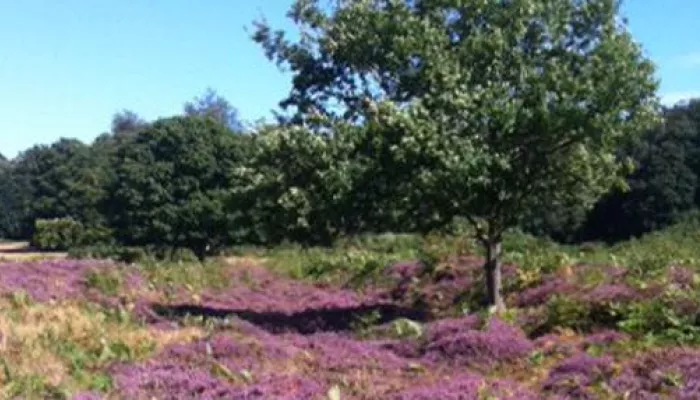Hothfield Heathlands is a SSSI listed site owned by Ashford Borough Council and managed by Kent Wildlife Trust. It is the last remaining heathland in Kent, and one of the last remaining acid bogs in the whole of the south east.
Habitat management at Hothfield mainly involves the removal of silver birch, aspen, willow and bracken from the heath and bog areas. Our volunteer groups have made tremendous progress across the site and, along with our grazing animals (Highland cattle and Konik ponies), we have been restoring areas that were slowly disappearing under invasive scrub.
The Heathland and bog restoration work has led to some interesting species discoveries. One of the bogs had become overgrown with young alder trees and was in danger of smothering out the rushes, grasses and sedges which are characteristic of that area. In amongst the patches of surviving grasses we found a number of tightly woven nests. They consisted of grasses and rushes weaved together into an impenetrable, tennis-ball sized ball, with no obvious entrance hole. Not only was the sheer number found interesting, but also they appeared to be constructed in pairs, with each one coupled with another less than around 4 metres away. Some research revealed that the tenants to these nests were actually Harvest mice!
Harvest mice (Micromys minutus) are Britain’s smallest rodents, reaching a grand weight of around 6g when adult. Their long prehensile tail means they are excellent climbers, enabling them to live among tall grasses and brambly areas and rarely touching the ground. Due to their size, harvest mice are rarely seen so the key feature that shows their presence are their spherical woven nests. The nests are constructed within grass tussocks or among bramble patches, but around halfway up the sward length, using the vegetation as a frame. The long grassy vegetation that grows in some of our bogs creates perfect conditions. In order to preserve this habitat, we will need to make sure the young trees do not begin to dominate again.
Harvest mice have no official legal protection in the UK or EU, although they were added to the Biodiversity Action Plan (BAP) list of species. There is clear evidence that the populations of harvest mice in the UK are declining. This is mainly due to habitat loss due to changes of farming practices and the decline in habitat edges such as hedgerows. Although, they are a species that can be easily overlooked due to their unobtrusive nature and small size, so accurate population estimates can only be reached through organised surveys and field sign submissions.
There are harvest mice surveys carried out all over the country with a number of different organisations. If you would like to get involved or if you think you have found a nest or a harvest mouse and would like to record it, contact your local Wildlife Trust- all records are crucial to build up a population estimate.
Written by Hollie Weatherill

